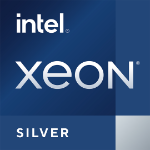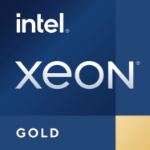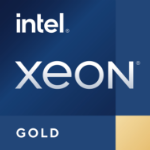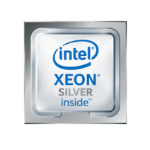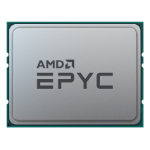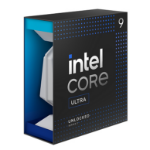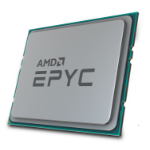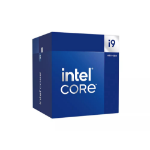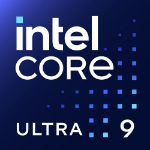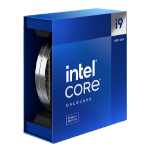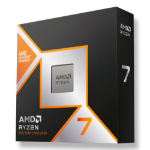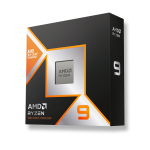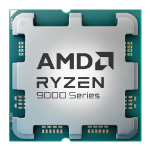AMD Ryzen 9 9950X processor 4.3 GHz 80 MB L2 & L3 Box
£540.17
£450.14
AMD Ryzen 9 9950X, AM5, 4.3GHz, Up to 5.7GHz, 16 CPU Cores, 32 Threads, 170W TDP
More Information
| Processor socket | Socket AM5 |
|---|---|
| Box | Yes |
| Processor cores | 16 |
| Processor family | AMD Ryzen 9 |
| SKU | 100-100001277WOF |
| EAN | 0730143315272 |
| Manufacturer | AMD |
| Availability | Y |
| Product Family | Ryzen |
| Product Series | 9 |
Description
AMD Ryzen 9 9950X 4.3 GHz 16-Core AM5 Processor
Key Features
16 Cores & 32 Threads
4.3 GHz Base Clock
5.7 GHz Max Boost Clock
Socket AM5
16MB L2 & 64MB L3 Cache
DDR5-5600 ECC Memory
Integrated AMD Radeon Graphics
Unlocked Processor
Supports PCIe 5.0 x16
Zen 5 Architecture
Take your computing experiences to a new level with the AMD Ryzen 9 9950X 4.3 GHz 16-Core AM5 Processor. Featuring 16 cores and 32 threads with 64MB of L3 Cache, this desktop processor quickly loads and multitasks demanding applications.
Designed for socket AM5 motherboards using the powerful Zen 5 4nm architecture, this Ryzen processor offers exceptional performance. With a base clock speed of 4.3 GHz and a max boost clock speed of 5.7 GHz, the Ryzen 9 9950X delivers the power needed to smoothly handle tasks ranging from content creation to immersive gaming experiences. You can boost performance further by overclocking this unlocked processor. Other features include support for PCIe Gen 5 technology and 5600 MHz ECC DDR5 RAM with compatible motherboards.
This processor has a 170W TDP (Thermal Design Power) and does not include a cooling solution. Integrated Radeon Graphics delivers rich visuals.
Precision Boost 2
AMD Ryzen processors monitor the system's energy consumption, temperatures, and other factors to automatically raise clock speeds, allowing applications to perform faster.
Precision Boost Overdrive
Precision Boost Overdrive technology takes advantage of your compatible motherboard's design to boost clock speeds higher and for longer periods of time. It also allows you overclock the processor at the touch of a button.
AMD Ryzen Master Utility
Personalized Performance
The AMD Ryzen Master Utility provides you with multiple custom profiles to store CPU, GPU, and DDR4 memory configurations. Use it to configure performance parameters for the active cores and adjust memory times. You can also optimize general performance or fine tune your favorite applications.
System Monitoring
Monitor your system in real-time using the AMD Ryzen Master Utility, which features a histogram of per-core clock rates and temperature, including average and peak readings.
Specifications
General
CPU Model
AMD Ryzen 9 9950X
CPU Socket
AM5
Manufacturing Process
4 nm
Maximum CPU Configuration
1S
Maximum Number of PCIe Lanes
28 (Revision 5.0)
Unlocked
Yes
Performance
Number of Cores
16
Number of Threads
32
Base Clock Speed
4.3 GHz
Maximum Boost Speed
5.7 GHz
L3 Cache
64 MB
Memory Support
Maximum Capacity
192 GB
Memory Support
DDR5 Up to 5600 MHz
ECC Memory
Yes
Channel Architecture
Dual Channel
Power
Thermal Design Power (TDP, Max)
170 W
Included Thermal Solution
No
Maximum Temperature
203°F / 95°C
Thermal Monitoring Technologies
Yes
Technology
AES Support
Yes
Extension
AVX, AVX 2.0, AVX-512, FMA3, SSE 4.1/4.2
Instruction Set
64-Bit
Virtualization
Yes: AMD-V
Performance Technologies
Precision Boost 2
Integrated Graphics
AMD Radeon
Output Support
DisplayPort, HDMI
Base Clock Speed
2200 MHz
Warranty
Limited 3-Year Manufacturer Warranty
Key Features
16 Cores & 32 Threads
4.3 GHz Base Clock
5.7 GHz Max Boost Clock
Socket AM5
16MB L2 & 64MB L3 Cache
DDR5-5600 ECC Memory
Integrated AMD Radeon Graphics
Unlocked Processor
Supports PCIe 5.0 x16
Zen 5 Architecture
Take your computing experiences to a new level with the AMD Ryzen 9 9950X 4.3 GHz 16-Core AM5 Processor. Featuring 16 cores and 32 threads with 64MB of L3 Cache, this desktop processor quickly loads and multitasks demanding applications.
Designed for socket AM5 motherboards using the powerful Zen 5 4nm architecture, this Ryzen processor offers exceptional performance. With a base clock speed of 4.3 GHz and a max boost clock speed of 5.7 GHz, the Ryzen 9 9950X delivers the power needed to smoothly handle tasks ranging from content creation to immersive gaming experiences. You can boost performance further by overclocking this unlocked processor. Other features include support for PCIe Gen 5 technology and 5600 MHz ECC DDR5 RAM with compatible motherboards.
This processor has a 170W TDP (Thermal Design Power) and does not include a cooling solution. Integrated Radeon Graphics delivers rich visuals.
Precision Boost 2
AMD Ryzen processors monitor the system's energy consumption, temperatures, and other factors to automatically raise clock speeds, allowing applications to perform faster.
Precision Boost Overdrive
Precision Boost Overdrive technology takes advantage of your compatible motherboard's design to boost clock speeds higher and for longer periods of time. It also allows you overclock the processor at the touch of a button.
AMD Ryzen Master Utility
Personalized Performance
The AMD Ryzen Master Utility provides you with multiple custom profiles to store CPU, GPU, and DDR4 memory configurations. Use it to configure performance parameters for the active cores and adjust memory times. You can also optimize general performance or fine tune your favorite applications.
System Monitoring
Monitor your system in real-time using the AMD Ryzen Master Utility, which features a histogram of per-core clock rates and temperature, including average and peak readings.
Specifications
General
CPU Model
AMD Ryzen 9 9950X
CPU Socket
AM5
Manufacturing Process
4 nm
Maximum CPU Configuration
1S
Maximum Number of PCIe Lanes
28 (Revision 5.0)
Unlocked
Yes
Performance
Number of Cores
16
Number of Threads
32
Base Clock Speed
4.3 GHz
Maximum Boost Speed
5.7 GHz
L3 Cache
64 MB
Memory Support
Maximum Capacity
192 GB
Memory Support
DDR5 Up to 5600 MHz
ECC Memory
Yes
Channel Architecture
Dual Channel
Power
Thermal Design Power (TDP, Max)
170 W
Included Thermal Solution
No
Maximum Temperature
203°F / 95°C
Thermal Monitoring Technologies
Yes
Technology
AES Support
Yes
Extension
AVX, AVX 2.0, AVX-512, FMA3, SSE 4.1/4.2
Instruction Set
64-Bit
Virtualization
Yes: AMD-V
Performance Technologies
Precision Boost 2
Integrated Graphics
AMD Radeon
Output Support
DisplayPort, HDMI
Base Clock Speed
2200 MHz
Warranty
Limited 3-Year Manufacturer Warranty
Specifications
| Processor | |
|---|---|
| Processor generation | AMD Ryzen 9000 Series |
| Processor base frequency | 4.3 GHz |
| Processor manufacturer | AMD |
| Cooler included | No |
| Thermal Design Power (TDP) | 170 W |
| Processor cache | 80 MB |
| Processor model | 9950X |
| Processor threads | 32 |
| Processor operating modes | 64-bit |
| Processor boost frequency | 5.7 GHz |
| Processor lithography | 4 nm |
| Processor family | AMD Ryzen™ 9 |
| Processor cores | 16 |
| Processor socket | Socket AM5 |
| Processor cache type | L2 & L3 |
| Package type | Box |
| Memory | |
| Maximum internal memory supported by processor | 192 GB |
| Memory types supported by processor | DDR5-SDRAM |
| Memory clock speeds supported by processor | 3600,5600 MHz |
| Memory channels | Dual-channel |
| ECC | Yes |
| Non-ECC | Yes |
| Graphics | |
| Discrete graphics card | No |
| On-board graphics card model | AMD Radeon |
| On-board graphics card | Yes |
| On-board graphics card base frequency | 2200 MHz |
| Discrete graphics card model | Not available |
| Power | |
|---|---|
| Thermal Design Power (TDP) | 170 W |
| Technical details | |
| PCI Express slots version | 5.0 |
| Supported instruction sets | AES, AVX, AVX 2.0, AVX-512, SSE, SSE2, SSE3, SSE4.1, SSE4.2, SSSE3 |
| Thermal Design Power (TDP) | 170 W |
| Processor cache type | L2 & L3 |
| Features | |
| Thermal Design Power (TDP) | 170 W |
| PCI Express slots version | 5.0 |
| Supported instruction sets | AES, AVX, AVX 2.0, AVX-512, SSE, SSE2, SSE3, SSE4.1, SSE4.2, SSSE3 |
| Packaging data | |
| Package type | Box |
Delivery Details
- UK distributors.
- Order before 4 pm for next-day delivery.
- Standard (2-3 days) £7.50
- Next Day £9.99
- Free standard delivery over £100
There are deivery surcharges to these postcodes:
| Postcode | Charge |
| IV3-40 | £20 |
| IV52-54 | £20 |
| IV63 | £20 |
| KW1-14 | £20 |
| PA10-40 | £20 |
| PH19-40 | £20 |
| PH50 | £20 |
| HS | £50 |
| IV41-51 | £50 |
| IV55-56 | £50 |
| KA27-28 | £50 |
| KW15-17 | £50 |
| PA41-49 | £50 |
| PA60-62 | £50 |
| PA76-78 | £50 |
| PH41-44 | £50 |
| ZE | £50 |
| IM | £50 |
| JE | £50 |
| GY | £50 |
| TR21-25 | £50 |
| BT | £20 |
Suggested Products
AMD EPYC 8124P processor 2.45 GHz 64 MB L3 Tray
Shop NowHPE Intel Xeon Silver 4510 processor 2.4 GHz 30 MB...
Shop NowCisco Intel Xeon Gold 5220R processor 2.2 GHz 35.7...
Shop NowLenovo Intel Xeon Gold 5220R processor 2.2 GHz 35....
Shop NowLenovo Intel Xeon Gold 5220R processor 2.2 GHz 35....
Shop NowLenovo Intel Xeon Gold 5220R processor 2.2 GHz 35....
Shop NowHPE Intel Xeon-Silver 4215R (3.2 GHz/8-core/130 W)...
Shop NowHPE Intel Xeon-Silver 4215R processor 3.2 GHz 11 M...
Shop NowAMD EPYC 4545P processor 3 GHz 64 MB L3 Tray
Shop NowAMD EPYC 4585PX processor 4.3 GHz 128 MB L3 Tray
Shop NowIntel Core Ultra 9 285 processor 36 MB Smart Cache...
Shop NowAMD EPYC 4584PX processor 4.2 GHz 128 MB L3
Shop NowIntel Core i9-14900 processor 36 MB Smart Cache Bo...
Shop NowIntel Core i9-14900F processor 36 MB Smart Cache B...
Shop NowIntel Core i9-14900 processor 36 MB Smart Cache Tr...
Shop NowIntel Core Ultra 9 285K processor 36 MB Smart Cach...
Shop NowIntel Core Ultra 9 285K processor 36 MB Smart Cach...
Shop NowIntel Core i9-14900KF processor 36 MB Smart Cache ...
Shop NowIntel Core i9-14900K processor 36 MB Smart Cache B...
Shop NowIntel Core i9-14900KS processor 36 MB Smart Cache ...
Shop NowAMD Ryzen 7 9800X3D processor 4.7 GHz 104 MB L2 & ...
Shop NowAMD Ryzen 9 9950X3D processor 4.3 GHz 144 MB L2 & ...
Shop NowAMD Ryzen 9 7900 processor 3.7 GHz 64 MB L3 Tray
Shop NowAMD Ryzen 9 9950X processor 4.3 GHz 80 MB L2 & L3 ...
Shop NowAMD Ryzen 9 9900X3D processor 4.4 GHz 140 MB L2 & ...
Shop NowAMD Ryzen 9 9950X3D processor 4.3 GHz 144 MB L2 & ...
Shop NowYou may also be interested in
| Product |
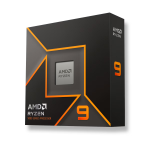
Bestseller
AMD Ryzen 9 9950X processor 4.3 GHz 80...
£540.17
£450.14
|
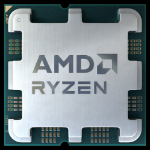 AMD Ryzen 9 7900 processor 3.7 GHz 64...
AMD Ryzen 9 7900 processor 3.7 GHz 64...
£442.97
£369.14
|
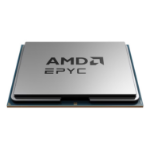 AMD EPYC 8124P processor 2.45 GHz 64 M...
AMD EPYC 8124P processor 2.45 GHz 64 M...
£603.41
£502.84
|
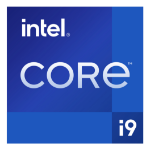
Recommended
Intel Core i9-14900KF processor 36 MB...
£434.96
£362.47
|

Hot Product
Intel Core i9-14900K processor 36 MB S...
£457.82
£381.52
|

Popular
Intel Core i9-14900KF processor 36 MB...
£473.38
£394.48
|
|---|---|---|---|---|---|---|
| SKU |
100-100001277WOF
|
100-000000590
|
100-000001135
|
BX8071514900KF
|
BX8071514900K
|
CM8071505094018
|
| Manufacturer |
AMD
|
AMD
|
AMD
|
Intel
|
Intel
|
Intel
|
| Processor lithography |
up to 22nm
|
up to 22nm
|
N/A
|
N/A
|
N/A
|
N/A
|
| Processor family |
AMD Ryzen 9
|
AMD Ryzen 9
|
AMD EPYC
|
Intel Core i9
|
Intel Core i9
|
Intel Core i9
|
| Processor socket |
Socket AM5
|
Socket AM5
|
Socket SP6
|
LGA 1700
|
LGA 1700
|
LGA 1700
|
| Processor cores |
16
|
12
|
16
|
24
|
24
|
24
|
| On-board graphics adapter |
Y
|
Y
|
N
|
N
|
Y
|
N
|
| Discrete graphics adapter |
N
|
N
|
N
|
N
|
N
|
N
|
| Cooler included |
N
|
N
|
N
|
N
|
N
|
N/A
|
| Package type |
Box
|
Tray
|
Tray
|
Box
|
Box
|
Tray
|




